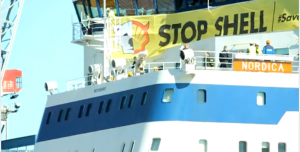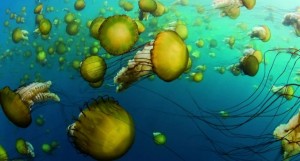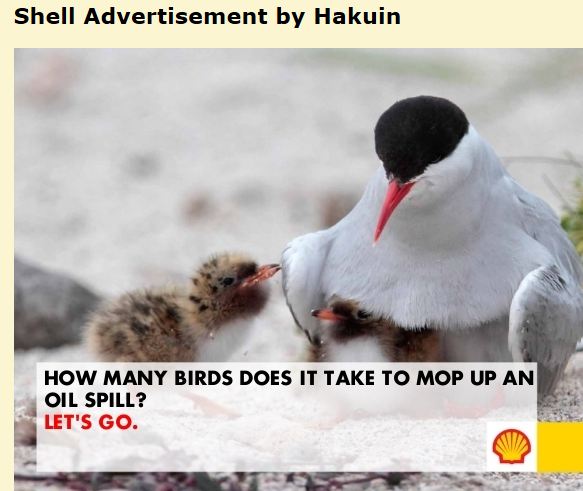Guerrilla Gardening: Community Led Regeneration
When I first heard of the guerrilla gardening concept just a few days ago I was fascinated. Then I realized, I also was a part of this effort while I lived in New York almost twenty years ago.
 My Story
My Story
Back in 1995, I remember planting bushes and trees on the streets of Corson Avenue and Victory Boulevard in Staten Island, NY. It was the thrill of knowing that green will prevail in spite of the industrialization of this location.
I felt empowered to be a part of this, even if it was only one time. I do not recall asking for permission from property owners, and if not that would be one prime example of guerrilla gardening. Furthermore, I often passed by community gardens present in downtown Manhattan. One of the most famous of all local landscape projects of this type is the Liz Christy Community Garden. It is found on Bowery at Houston Avenue, nearby Second Avenue.
Now this spot resides with permission of the city, so it really is more thought of as a community led regeneration project. However, the name of the organization that is very actively involved in outdoor projects like this is the Green Guerillas. Therefore, it often is referred to as a guerrilla gardening plot.
About the Liz Christy Community Garden
It was founded under the name First Community Garden in 1973. However, the presence of it dates back to the 17th century which then the location of it was Bouwerie and North Street.
From the mid-1970s onward the Green Guerillas took over the planting and care of it. Then, in 1986 it was dedicated to Liz Cristy, it’s founder. Over the past two decades, this garden has continued to flourish as a result of local dedication of passionate community regeneration volunteers.
It is open to anyone who wishes to take a nature walk or sit and relax somewhere along the path of vast shades of wildflowers and diverse types of greens. Pets and children are allowed, as long as they are kept under careful supervision. Anyone also can become a member and after 20 hours of volunteer service they can obtain a garden key.
Any flowers, bushes, or trees planted are there for the enjoyment of all but of course they don’t want anyone to touch-just look! Over the years, fruit trees, berry bushes, and vegetable plants have grown here. Guerilla gardening members have also planted redwoods and birches as well as flowering perennials and annuals.
 Other New York Gardens
Other New York Gardens
The NY York community led regeneration and guerillas gardening project also has brought continual life to other gardens.
Example sites include Papa and Mama Jones’ Community Garden in Brooklyn, The West Side Community Garden in Manhattan, and the Two Coves Community Garden in Queens.
Flora that can be find in various New York plots include geraniums, trillium, apples, tulips, orchids, and violets. Greens and flowers are implanted year round, and as a result something is always blooming at one of these community led gardens.
New York’s first Community Garden
http://www.lizchristygarden.us/
Read More
Create an Advert for Shell’s Destruction of the Arctic – Quickly…
Here’s a chance to show your creativity in response to Shell’s bid to destroy the Arctic.
Quickly – get there and get your ad up before this site gets closed down!
By the way… how many birds does it take?
Read More
GreenPeace Tells Shell: Don’t Destroy Our Arctic
Green Peace have been taking their message directly to Shell.
In a few weeks, Shell will begin drilling for oil in the Arctic. An oil spill in this fragile environment will be devastating. Stop Shell by signing up now to support a global Arctic sanctuary, protected from oil drilling.
Live video covers their action below.
All I Can: Best Ski Film Ever
Plot Summary
An unparalleled cinematic experience: All.I.Can is a stunning exploratory essay that compares the challenges of big mountain skiing to the challenges of global climate change.
Shot on 6 continents over 2 years, the world’s best skiers deliver inspirational performances while ground-breaking cinematography expands our vision of the natural world. Journey through Morocco’s majestic desert peaks, Greenland’s icy fjords, Chile’s volcanic craters, Alaskan spine walls, and more.
Join the revolution and experience one of the most spectacular, captivating, and thought-provoking films ever created in the action sports genre.
All.I.Can. iTunes HD download: itunes.apple.com/us/movie/sherpa-cinema-all-i-can/id470509338
All.I.Can. DVD / Blu-ray available at: sherpascinema.com
Thanks for your support!!
All.I.Can Awards:
“BEST FEATURE-LENGTH MOUNTAIN FILM” – Banff Mountain Film Festival 2011
“BEST DOCUMENTARY” – IF3 Film Festival Montreal 2011
“MOST INNOVATIVE VISUAL FX” – IF3 Film Festival Montreal 2011
“BEST SKI FILM” – Adventure Film Festival, Boulder 2011
“BEST CINEMATOGRAPHY” – ESPN Fan Favorites 2011
“PEOPLES CHOICE” and “BEST SKI FILM” – Fernie Film Festival, BC 2011
“BEST CINEMATOGRAPHY” – International Freeride Film Festival, France 2011
“BEST PICTURE” – International Freeride Film Festival, France 2011
“BEST FILM OF THE YEAR” – Adventure Film Festival, Copenhagen 2011
“BEST CINEMATOGRAPHY” – X-Dance Film Festival, SLC 2012
“AMBASSADOR OF GREEN” – X-Dance Film Festival, SLC 2012
“BEST FILM” – X-Dance Film Festival, SLC 2012
“FULL THROTTLE AWARD” – Kye Petersen, Powder Video Awards 2012
“BEST NATURAL AIR” – Kye Petersen, Powder Video Awards 2012
“BEST POV” – JP Auclair, Powder Video Awards 2012
“BEST EDITING” – Powder Video Awards 2012
“MOVIE OF THE YEAR” – Powder Video Awards 2012
Press reviews:
“The best movie in skiing.”
– Jamey Voss, ESPN es.pn/pPxkbQ
“Like listening to a Zeppelin song.”
– John Stifter, Powder Magazine: bit.ly/nl0JiT
“The Sherpas are firmly in the lead of a new wave of filmmakers that are changing the face of ski films for good.” – Leslie Anthony, Skier Magazine: bit.ly/mVaYsy
“By the end, as I headed out from the screening, trying to walk straight after being pummeled by what I had seen, the only thought going through my head was that the trailer did not do its movie justice.” – Mark Quail, skistarmovies.com/review/all-i-can
-
Actors
- Mark Abma
- Greg Hill
- JP Auclair
- Eric Hjorleifson
- Ingrid Backstrom
- Shannon Kernahan
- Chris Rubens
- James Heim
- Callum Pettit
- Mike Douglas
- Kye Petersen
- Rory Bushfield
- John Collison
- Lynsey Dyer
- Ian McIntosh
- Chad Sayers
- Matty Richard
- Dana Flahr
- Cody Barnhill
-
Directors
-
Producer
http://itunes.apple.com/us/movie/all.i.can.-by-sherpas-cinema/id470509338
Read MorePaul Snelgrove: Making Ocean Life Count
“How inappropriate to call this planet Earth when it is quite clearly Ocean.”
— Arthur C. Clark
The world’s first comprehensive Census of Marine Life — past, present, and future — was released in 2010 in London, at the same time that Paul Snelgrove released his book: Discoveries of the Census of Marine Life: Making Ocean Life Count.
 The Census of Marine Life was started by two scientists who realised that the Oceans were in trouble and we were doing nothing about it.
The Census of Marine Life was started by two scientists who realised that the Oceans were in trouble and we were doing nothing about it.
Planet Ocean
Although the oceans cover some 70% of our planet, providing more habitat than all other habitat combined, and produce about half of the new life everyday on earth as well as about half of the oxygen that we breathe, we know more about the surface of the Moon and about Mars than we do about the oceans
The Census project was undertaken by a global network of 2700 scientists from more than 80 nations who engaged in a 10-year scientific initiative assess and explain the diversity, distribution, and abundance of life in the global ocean.
The three main components of the census were organised around the questions:
What has lived in the oceans?
What does live in the oceans?
What will live in the oceans?
They wanted to construct the history of marine animal populations since human predation became important – roughly the last 500 years. The Roman development of salting fish as a means of preservation changed fishing patterns from one of purely catching “the meal for the day” to industrial scale fishing.
New Technologies
The study examined and used new technologies to explore unknown species and habitats, migration routes and distribution patterns, how the oceans are changing and what we can expect from them in the future.
New technologies facilitated research, remotely operated vehicles combined with satellite communication enabled distant scientists to participate in scientific investigations thousands of miles away, and the new science of genetic bar coding , developed by geneticists enabled the exact recognition of fish species.
Results have been quite astounding, with 4-5 new species from the ocean being described each day. The information has proved extremely valuable already in many ways, for example, scientists in the Gulf of Mexico had just taken a census of species in the gulf which proved very useful when the Gulf Oil Spill happened , to establish a clear idea of how marine life in the area had been affected.
Paul Snelgrove gives a fascinating talk supported by illuminating graphics and astounding photographs.
Read More



